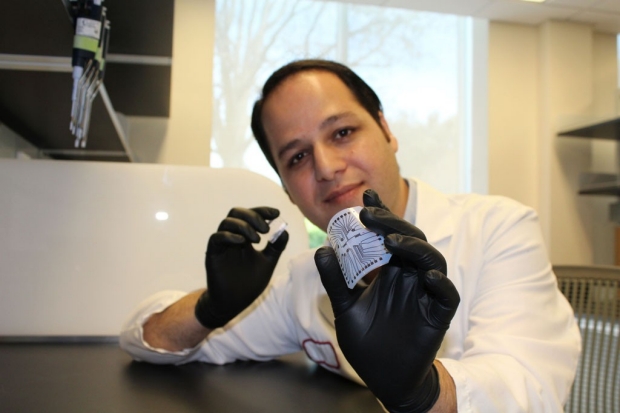Stanford University School of Medicine
See the following -
Machine Learning 101: The Healthcare Opportunities Are Endless
To understand how machine learning can aid healthcare organizations, healthcare executives first must have a basic grasp of what machine learning is and what it can do. “Machine learning is about discovering new knowledge,” said Zeeshan Syed, director of the clinical inference and algorithms program at Stanford Health Care and clinical associate professor, anesthesiology, perioperative and pain medicine, at the Stanford University School of Medicine. “At a high level, artificial intelligence is getting an agent, software, to behave like it’s smart..."
- Login to post comments
Scientists Develop ‘Lab on a Chip’ That Costs 1 Cent to Make
 Researchers at the Stanford University School of Medicine have developed a way to produce a cheap and reusable diagnostic “lab on a chip” with the help of an ordinary inkjet printer. At a production cost of as little as 1 cent per chip, the new technology could usher in a medical diagnostics revolution like the kind brought on by low-cost genome sequencing, said Ron Davis, PhD, professor of biochemistry and of genetics and director of the Stanford Genome Technology Center...
Researchers at the Stanford University School of Medicine have developed a way to produce a cheap and reusable diagnostic “lab on a chip” with the help of an ordinary inkjet printer. At a production cost of as little as 1 cent per chip, the new technology could usher in a medical diagnostics revolution like the kind brought on by low-cost genome sequencing, said Ron Davis, PhD, professor of biochemistry and of genetics and director of the Stanford Genome Technology Center...
- Login to post comments
She’s Got a Radical Approach for the Age of Superbugs: Don’t Fight Infections. Learn to Live with Them
As her father lay dying of sepsis, Janelle Ayres spent nine agonizing days at his bedside. When he didn’t beat the virulent bloodstream infection, she grieved. And then she got frustrated. She knew there had to be a better way to help patients like her dad. In fact, she was working on one in her lab. Ayres, a hard-charging physiologist who has unapologetically decorated her lab with bright touches of hot pink, is intent on upending our most fundamental understanding of how the human body fights disease...
- Login to post comments
Wearable Sweat Sensor Can Diagnose Cystic Fibrosis, Study Finds
 A wristband-type wearable sweat sensor could transform diagnostics and drug evaluation for cystic fibrosis, diabetes and other diseases. The sensor collects sweat, measures its molecular constituents and then electronically transmits the results for analysis and diagnostics, according to a study led by researchers at the Stanford University School of Medicine, in collaboration with the University of California-Berkeley. Unlike old-fashioned sweat collectors, the new device does not require patients to sit still for a long time while sweat accumulates in the collectors...
A wristband-type wearable sweat sensor could transform diagnostics and drug evaluation for cystic fibrosis, diabetes and other diseases. The sensor collects sweat, measures its molecular constituents and then electronically transmits the results for analysis and diagnostics, according to a study led by researchers at the Stanford University School of Medicine, in collaboration with the University of California-Berkeley. Unlike old-fashioned sweat collectors, the new device does not require patients to sit still for a long time while sweat accumulates in the collectors...
- Login to post comments